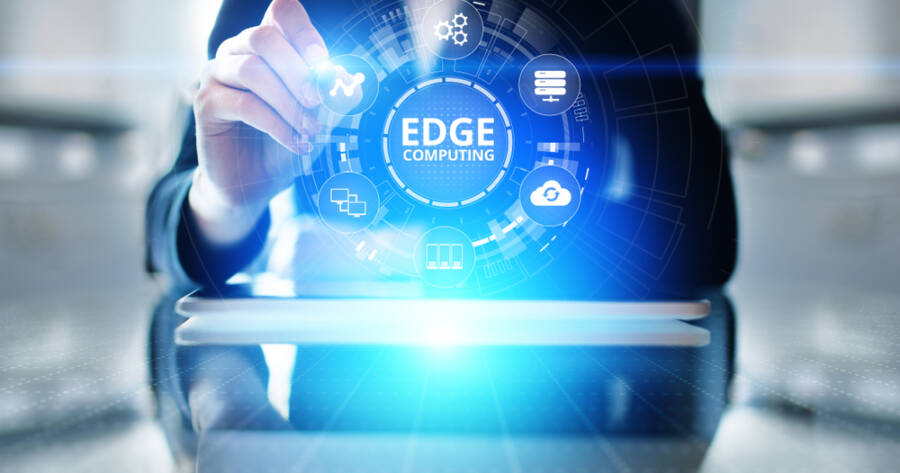In today’s hyperconnected world, data moves faster and in greater quantities than ever before. From smartphones and sensors to self-driving cars and smart factories, devices constantly generate information that must be processed instantly. That’s where edge computing comes in—a technological shift that brings data processing closer to the source. As real-time responsiveness becomes essential for everything from healthcare to manufacturing, the rise of edge computing is transforming how businesses and consumers experience technology.
What Is Edge Computing?
At its core, edge computing is about processing data closer to where it’s created, rather than sending it to distant data centers or the cloud. In traditional cloud computing, data travels long distances between users and centralized servers, which can create latency—or small delays—that impact performance.
Edge computing eliminates much of that delay by shifting computation to the “edge” of the network—closer to the user or device. This can mean processing data locally on an IoT (Internet of Things) device, a router, or a nearby micro data center. The result is faster decision-making and reduced reliance on high-bandwidth internet connections.
For example, a self-driving car can’t afford a delay when detecting a pedestrian. With edge computing, critical data is processed instantly inside the vehicle, ensuring safety and precision.
Why Speed and Latency Matter
Latency—the time it takes for data to travel from a device to a server and back—is one of the biggest barriers to efficiency in digital systems. Even a few milliseconds of delay can have real-world consequences. In sectors like finance, healthcare, and transportation, those milliseconds can translate into lost revenue, missed opportunities, or safety risks.
Edge computing reduces latency by cutting out unnecessary data travel. The number of connected devices worldwide is projected to exceed 55 billion by 2025, and much of the data they produce will need immediate analysis. Processing that information locally helps avoid bottlenecks that would otherwise occur if all data had to move through centralized cloud servers.
In practical terms, faster processing means better customer experiences, more efficient industrial operations, and greater reliability in mission-critical systems. Whether it’s an online retailer using real-time analytics to recommend products or a hospital using connected sensors for patient monitoring, edge computing ensures that speed isn’t just an advantage—it’s a necessity.
Key Benefits Driving Edge Adoption
Edge computing offers several tangible benefits beyond just speed:
- Improved reliability: By keeping data processing local, systems can continue to function even when internet connectivity is disrupted. This is vital for remote locations or industries that can’t afford downtime.
- Enhanced security: Sensitive data can be processed locally instead of being transmitted across networks, reducing exposure to cyber threats.
- Bandwidth efficiency: With less data traveling back and forth between devices and cloud servers, organizations can save on bandwidth costs and reduce network congestion.
These advantages make edge computing particularly appealing to industries like energy, manufacturing, logistics, and telecommunications—sectors where performance and reliability are key to success.
How Edge Computing Supports Emerging Technologies
Edge computing doesn’t just make existing systems faster—it also enables innovation in emerging technologies. For instance, 5G networks work hand in hand with edge computing to deliver ultra-fast, low-latency communication. This partnership powers advancements such as smart cities, autonomous vehicles, and augmented reality applications.
In manufacturing, edge computing allows machines to analyze performance data in real time, predicting maintenance needs before breakdowns occur. In retail, it can personalize customer experiences through on-site data analysis. In healthcare, wearable devices equipped with edge processing can detect irregular heartbeats or monitor glucose levels instantly, alerting doctors in real time.
By distributing computing power closer to users and devices, edge computing creates a foundation for smarter, more responsive technologies that redefine efficiency and connectivity.
Challenges of Edge Computing
While edge computing brings numerous benefits, it also introduces new challenges. Managing large numbers of distributed devices requires strong coordination and consistent cybersecurity measures. Each new node in an edge network can become a potential entry point for malicious actorsers if not properly secured.
There’s also the issue of standardization—different industries and vendors may use varying architectures and protocols, complicating interoperability. Additionally, maintaining data consistency across edge and cloud environments requires advanced management tools.
Despite these obstacles, companies continue to invest heavily in edge infrastructure. Major players like Amazon Web Services, Microsoft Azure, and Google Cloud have expanded their edge services to meet growing demand, signaling a future where edge computing is as ubiquitous as cloud computing itself.
The Future of Edge Computing
The growth of edge computing represents a major shift in how we think about data processing. Instead of a centralized model, the digital world is becoming decentralized—distributed across countless nodes that process data where it’s most effective.
Analysts predict that by 2025, over 75% of enterprise data will be created and processed outside of traditional data centers. This trend reflects a future in which edge computing becomes an essential layer of digital infrastructure, enabling everything from intelligent transportation systems to real-time business analytics.
The Need for Speed in a Connected World
As devices, sensors, and networks continue to expand, the demand for instant data processing will only grow stronger. Edge computing meets that demand by delivering the speed, efficiency, and reliability that modern applications require.
For businesses, embracing edge technology means more than staying competitive—it’s about future-proofing operations in a world where every second counts. Whether powering next-generation healthcare, logistics, or entertainment, edge computing is redefining what it means to be fast in the digital age—and proving that when it comes to innovation, speed truly matters more than ever.

